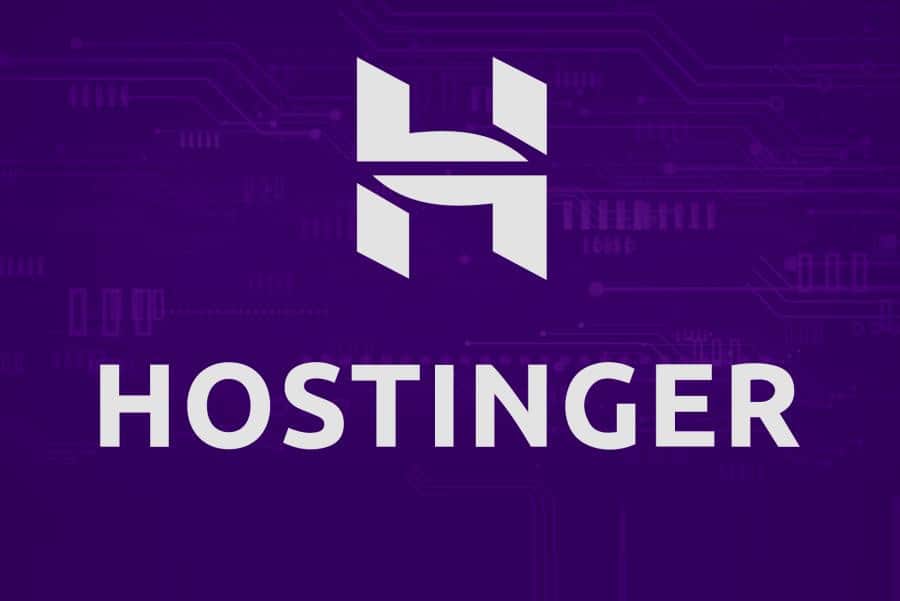Hostinger – 5 Steps to Get Your New Fast VPS
Introduction To Our Hostinger – 5 Steps To Get Your New Fast VPS (Virtual Private Server) Blog Post
Nowadays, most businesses depend on the internet for advertising, selling, and expanding their business. Many of them have chosen social platforms such as YouTube, Instagram, TikTok, etc., because of their popularity and ease of use. You don’t need to pay much for getting visibility. If you produce nice content and follow SEO rules, you will become popular and increase your reach. However, what most businesses are missing is running a business website.
Although social platforms are cheaper and perhaps more popular, there are a few things you cannot gain from them. For example, you own your website, so you will not need to limit yourself to the rules and regulations of social media. Also, you can generate leads as well as getting traffic at the same time.
Running a website is not as hard as it used to be. You don’t need to know coding language or other technical skills. In fact, many companies are providing all the required services for establishing and running a website. Hostinger is one of these companies providing professional services to all businesses in the world. Here, in this article, we are going to discuss the services that Hostinger provides. Also, we will introduce five steps to get your new virtual private server with Hostinger.

What Is Web Hosting?
What is web hosting? What can it do for us? Imagine that you want to have a website for your business. There are several things you need to determine before going online. For example, you have to take care of the domain, WordPress, plugins, themes, etc. However, hosting is more important than all of them because your website will not be shown on the internet without it. So, let's see what hosting is and how many types there are?
Well, your website is nothing but a bunch of files and data. Well, these files and data must be stored in a physical location on a computer. And, this computer has to be connected to the internet. Not all computers can store your files and data. So, you will need high-powered computers. We call these computers web servers. Now, we are getting close to the definition of web hosting.
Website hosts are companies with many web servers in different locations in the world. When these locations are big enough, we call them data centers. However, it doesn’t end here. Websites hosts should take care of high-powered computers and provide software, security, support, and the bandwidth you need for a fast internet connection. This is exactly what we call web hosting. You will rent space on web servers and store your website's data and files.

What Are The Different Types Of Web Hosting?
There are basically five different types of web hosting. They include shared hosting, dedicated server hosting, cloud hosting, managed hosting, and virtual private server (VPS). Let's take a look at them:
- Shared hosting. Shared hosting is a good choice for beginners and people who want to start their website. You are not the only website on the server that is shared hosting. In fact, many other websites are using the resources such as RAM (Random Access Memory) and CPU (Central Processing Unit). Website hosts usually offer helpful tools such as website builders, WordPress hosting, and the ability to email clients. So, it is perfect for small businesses and newcomers.
- Unlike shared hosting, you will have full control over the server in dedicated server hosting as you are the only website on it. So, it is more expensive than shared hosting. Dedicated server hosting is appropriate for large businesses with lots of traffic.
- What about cloud hosting? Networking matters a lot here because this hosting server is run by combined computer resources from many computers.
- Finally, we have managed hosting. In managed hosting, companies provide technical services like hardware and software setup, configuration, maintenance, hardware replacement, technical support, patching, updating, and monitoring.

What Is Virtual Private Server (VPS) Hosting
To better understand virtual private servers, we will compare them with two other types of hosting. As we said, your website's files and data are placed on a server along with the files of other websites in shared hosting. Also, everything, including bandwidth and resources, is shared among those websites on one server. As a result, you have very little control over the server settings or operations. It looks like renting an apartment in a house.
It is great for small and straightforward websites with daily traffic of not more than 2 thousand visitors. In contrast, you have full use of server bandwidth and resources in dedicated hosting. Software and operations are customizable in dedicated hosting. However, even with dedicated hosting, you don’t have access to the server hardware. It is a good option for large, complex, and high-traffic sites.
Now, let's talk about VPS. Even there might be several users on one server. You will have your own space and don’t share it with others. How? It is because, in VPS, the physical server is divided into multiple private environments. This is what we call virtualization. To put it simply, your resources and bandwidth will not be shared with other residents of the server.
Just like dedicated hosting, VPS hosting allows you to control and customize the server features. Features such as server setting, installing software, adding users, turning the server on & off are all doable. In general, VPS hosting is more affordable than dedicated hosting. Owning space & resources and controlling the server make VPS an interesting choice.
What Is Hostinger?
Here are some simple facts for everyone who wants to know about Hostinger:
- Very simply, Hostinger is an employee-owned web hosting and internet domain registrar.
- The company was founded in 2004 as Hosting Media.
- Hostinger provides web, shared, cloud and VPS hosting, email marketing, Minecraft hosting, Windows VPS, and WordPress hosting.
- Now, Hostinger has nearly 1,000 employees.
- Its subsidiaries include 000webhost, hosting24, Niagahoster, Weblink, and Zyro.
- Hostinger has a data center in countries such as The United States, The United Kingdom, Indonesia, Brazil, etc.
- It has nearly 30 million users.
- Hostinger is active in 178 countries across the world.

Hostinger's Pricing
There are six VPS hosting plans available on the Hostinger website. These plans include VPS1, VPS2, VPS3, VPS4, VPS5, and VPS6. They cost $3.95, $8.95, and $12.95, $15.95, $23.95, and $38.99 per month. Hostinger's plan features include VCPU, Memory, SSD storage, Geekbench Score, Bandwidth, Dedicated IP, Full Root Access, 100 mb/s Network, IPV4 & IPV6 support, and 24/7/365 support. The most popular plan is VPS2. With this plan, you will save 55%. Also, Hostinger grants you 2 GB RAM, 40 GB SSD Disk space, 2 TB Bandwidth, Dedicated IP, and Full root access.
5 Steps to Get Your New Virtual Private Server with Hostinger
Most web servers run on Unix-based systems. So, how can we manage them on a Windows operating system? In fact, we should learn about Windows server management. Now, we want to guide you through a step-by-step process of learning about managing your server. Let's get started.
Step One: You Have To Learn How To Log Into Your VPS Via Secure Shell (SSH) Access
Let me ask you a question, how do you usually get connected to a website? I'm not talking about using a browser, though. For example, with File Transfer Protocol (FTP), you can upload, download, or edit files on your server. However, FTP doesn’t let you issue commands to your server. What's the solution? You guessed it. For issuing commands, you have to use Secure Shell (SSH) access. What is it? It is basically a protocol that lets you access remote servers.
What else can you do? SSH also gives you strong encryption and authentication protocols. In fact, SSH is considered one of the primitive steps toward server management. You should also know that the web host is responsible for your server's IP address, a username (usually root), and a password. A root account is a user that has full control and access to a specific system. In a way, we can consider a root as your administrator.
Step Two: Update Your Server
People always hear that they need to update their software. The same is true with servers too. All the components of your server must be up to date. Everything is connected when it comes to your VPS. Just one outdated software can put your server as well as website in great danger of being hacked.
Also, you definitely don’t want to lose any new features and the possibility to improve your website performance. Updating your server will not let you get behind your competitors. So, please update your server's packages regularly and on time. After updating, don’t forget to restart your server using the reboot command.
Step Three: Create A New User And Modify Its Privileges
You might be a prudent and accurate person, and that's completely true. However, doing something not correctly could always happen. What's the solution to avoid this? One of the best ways to do the tasks more precisely is creating a new user and modifying its privileges.
What does it mean? A root account is solely responsible for everything happening in your server. It might be good to control all the tasks with one unique user. However, you are going to have serious problems when you do something mistakenly. It could harm your server severely. Having another user with superuser privileges lets you avoid mishaps. You will need to add the sudo prefix to any command with this extra user before confirming it.
Step Four: Enable Public Key Authentication
People are always looking for ways to increase the security of your server. With public-key authentication, you produce a set of both ‘public' and ‘private' keys. How does this help you? It's easy! After equipping your server with public key authentication, you will increase your security because you have to have both the private key and a passphrase to log in.
Step Five: Set Up A Firewall For Your VPS
Security! Security! And again, security! Enabling a firewall for your VPS is one of the last steps you need to take to maximize your server's safety. You can install a firewall with different programs. With a firewall, you will be able to define some restrictions for your website's traffic. One of the programs designed to do this is iptable.
So, as you can see, most steps are related to your website and server's security. Don’t underestimate them and go for them as soon as possible before it's too late.
Hostinger Alternatives
Hostinger is not the only company that offers VPS services. Many big companies are competing for more users. DreamHost, Hostwinds, A2 Hosting, HostGator, Bluehost, GoDaddy, Pantheon, and DigitalOcean Droplets are some of the most popular web hosting services in the world. You can compare them very carefully and see which one works better for you.
For example, if you are low in budget, Hostinger is a better choice than DreamHost as it is much cheaper. Or, if you need web hosting with the simplest interface and lots of help from the supportive team of the company, you should go for HostWinds as it is one of the best in those categories. What is your take on this?

Summary
Nowadays, all companies, whether large or small, need a website for taking care of advertising, selling online, expanding reach, securing online presence, etc. With a website, other issues will come up very fast. One of the most important factors for your website is web hosting. Without it, your content and data cannot be online.
In this article, we reviewed different types of web hosting. Then, we introduced the Hostinger web hosting company and discussed one of its products which is VPS. We talked about five steps everyone needs to take to secure his/her website safety and security. I hope you find this article helpful about Hostinger. Don’t forget to follow our upcoming content. Take care.
JeannetteZ
I would love to hear from you. Please leave me your questions, experience. remarks, and/or suggestions about Hostinger in the comments section below. You can also reach me by email at Jeannette@WorkFromAnywhereInTheWorld.com.
You might also enjoy these blog posts:








